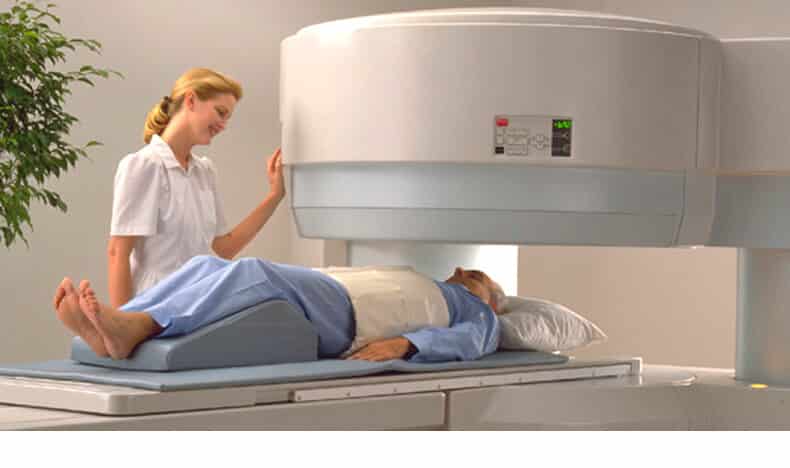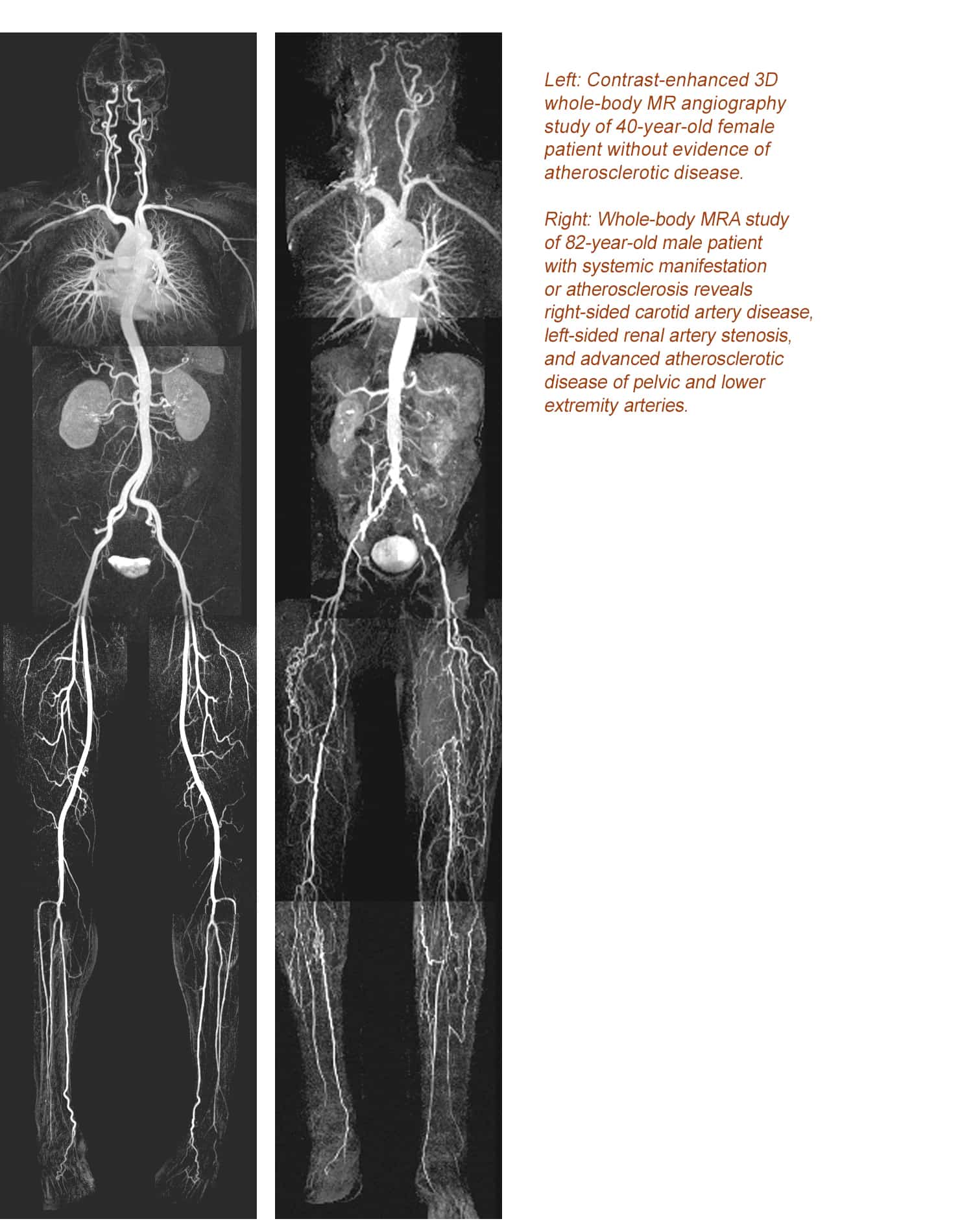 Atherosclerosis has become a serious health problem in developed countries, and has emerged as the main cause of morbidity and mortality worldwide. Treatment strategies, including surgical and percutaneous catheter-based interventions, as well as pharmacological treatment, depend on the accurate classification of atherosclerotic disease with respect to location, extent, and severity of arterial involvement. For this purpose, several imaging techniques are in clinical use, including conventional catheter angiography, duplex ultrasound, CT angiography, and MR angiography.
Atherosclerosis has become a serious health problem in developed countries, and has emerged as the main cause of morbidity and mortality worldwide. Treatment strategies, including surgical and percutaneous catheter-based interventions, as well as pharmacological treatment, depend on the accurate classification of atherosclerotic disease with respect to location, extent, and severity of arterial involvement. For this purpose, several imaging techniques are in clinical use, including conventional catheter angiography, duplex ultrasound, CT angiography, and MR angiography.
Ninety percent of atherosclerotic lesions are identified below the aortic bifurcation. Thus, the lower limbs are the most frequently affected vascular territory. Presently, peripheral vascular disease accounts for 50,000 to 60,000 percutaneous transluminal angioplasties, implantation of 110,000 vascular prostheses, and 50,000 amputations annually in the U.S. alone.
Peripheral vascular disease is frequently associated with carotid, coronary, and renal arterial disease, reflecting the systemic nature of atherosclerotic disease.1
Applications in Peripheral Vascular Disease
In one study, 180 consecutive patients (3000 vascular segments) with suspected peripheral vascular disease underwent whole-body MR Angiography. All patients were initially referred for the assessment of pelvic and lower extremity arterial vasculature.
Whole-body MR Angiography revealed additional and clinically relevant disease in 42 out of 180 patients (48 vascular segments), including renal artery stenosis (27 cases), carotid arterial stenosis (21 cases), subclavian artery stenosis (five cases), and abdominal aortic aneurysm (seven cases).
- Coronary artery disease. Studies on the prevalence of coronary artery disease in patients with peripheral vascular disease show that the history, clinical examination, and electrocardiography results typically indicate…2
- Cerebrovascular disease. The link between peripheral vascular disease and cerebrovascular disease seems to be weaker than that between peripheral vascular and coronary artery disease…3
- Carotid lesions. The fact that 21 unsuspected carotid lesions were identified in 17 patients in the described series emphasizes the fact that the history is often too focused and biased by the primary…
- Hypertension. Approximately one-fourth of patients with peripheral vascular disease have hypertension. The possibility of renal artery stenosis…
Whole-Body MRA and Vascular Screening
Expert panels throughout the world have advocated targeting high-risk individuals for primary prevention. Risk factors known to predict cardiovascular events…
♦ The Value of Screening
Arguments are ongoing about the value of screening all patients with peripheral vascular disease, symptomatic or not, particularly for carotid disease and aortic aneurysms. Patients with claudication are undoubtedly more likely…
When discussing the value of screening patients for abdominal aortic aneurysms, several points must be considered. For unknown reasons, the prevalence of abdominal aortic aneurysms…
Conclusion
Check out Intracranial Aneurysms by Stefan G. Ruehm, MD at the Apple iBooks Store. For other articles related to vascular diseases click here.
REFERENCES
- Ulusoy FR, Yolcu M, Ipek E, et al. Coronary Artery Disease Risk Factors, Coronary Artery Calcification and Coronary Bypass Surgery. J Clin Diagn Res. 2015 May;9(5):OC06-10.
- Bourantas CV, Crake T, Zhang Y3, et al. Intravascular imaging in cardiovascular aging. Exp Gerontol. 2017 May 15.
- Amini A, Gordon I, Wilson S, Williams RA. Noncompressible arteries correlate with increased cardiovascular mortality at 2 years. Ann Vasc Surg. 2013 Oct;27(7):918-23.
- Stackelberg O, Wolk A, Eliasson K, et al. Lifestyle and Risk of Screening-Detected Abdominal Aortic Aneurysm in Men. J Am Heart Assoc. 2017 May 10;6(5).
